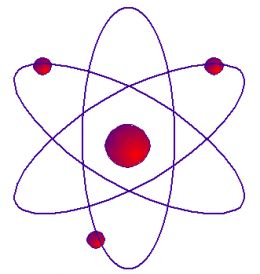Researchers: We Make Transistors 1M Times More Efficient
Forget 10x efficiency increase. What about 1,000,000x?
New research coming out of the McCormick School at Northwestern University proposes the use of spin-transistors as a replacement for traditional CMOS transistors in computer chips. The scientists behind the project claim that electronic circuits could be up to a million times more efficient when using spintronics.
First shown at the International Symposium On Nanoscale Architectures held earlier this month in the Netherlands, the technology is described as an "entirely new logic circuit family" that uses magnetoresistive bipolar spin-transistors that are capable of performing the same functions as traditional CMOS transistors, but take advantage of the magnetic properties in electron spin to do so.
How fast and how efficient is the technology now? Don't ask. No information beyond the initial research and an associated paper "Emitter-Coupled Spin-Transistor Logic" has been disclosed. Don't expect this technology to materialize in any products anytime soon. However, in theory, it is amazing to see what may be possible in future devices.
Get Tom's Hardware's best news and in-depth reviews, straight to your inbox.

Douglas Perry was a freelance writer for Tom's Hardware covering semiconductors, storage technology, quantum computing, and processor power delivery. He has authored several books and is currently an editor for The Oregonian/OregonLive.
-
lashabane In theory; I rule the world.Reply
It's only theory.
I do like the direction this research is headed. If only theories were put into practice faster than the current 10-15+ year timeline we're currently seeing. -
GeoMan Nerd correction, "1M times more efficient" would be 1000 times more efficient, the numeric abbreviation M stands for mega not million. What you want is either 1G (G for gigia, or 1 000 000) or just "1 million".Reply -
Pyree ^Correction again. Thousand is kilo (10^3), million is mega (10^6), billion is giga (10^9).Reply -
The_Trutherizer 1M x Efficiency would mean almost no heat generated meaning not only that a CPU would be able to operate without a fan (which would be great), but that you could stack as many layers of transistors on top of each other as you want. Also these could probably then be clocked at several hundred or thousand GHz if the timing mechanism allows for it. If this research leads to anything concrete we may soon see the first cube form processors with as much vertical real-estate as it has horizontally.Reply
In short if this is true then we may see single processors with as much computing power as a modern day super computer or more. I wonder how small they can make these transistors... -
hardcore_gamer GeoManNerd correction, "1M times more efficient" would be 1000 times more efficient, the numeric abbreviation M stands for mega not million. What you want is either 1G (G for gigia, or 1 000 000) or just "1 million".Reply
You are wrong and the article is right.
1 Mega = 1 Million
1 Giga = 1 Billion -
GeoMan Reply^Correction again. Thousand is kilo (10^3), million is mega (10^6), billion is giga (10^9).
You are wrong and the article is right.
1 Mega = 1 Million
1 Giga = 1 Billion
I fail, that's what I get for trying to think before my first cup of coffee (-; -
"an associated paper "Emitter-Coupled Spin-Transistor Logic""Reply
Where is this paper? Please add a link to the Paper or the Journal. I'm sick of articles without references. -
bepi Think about that: When a technology like this will become real, it will be very hard to produce working chips for sure. As a result we will see small CPUs with one core and a very limited functionality. The chip may look like a 8086, but if it is 1.000.000 times more efficient/fast(?) it will be competitive anyway.Reply -
gtvr I don't think they have looked at mass production techniques yet. I'm certain that over time, something like this would start out slow but get more efficient as techniques are developed.Reply
